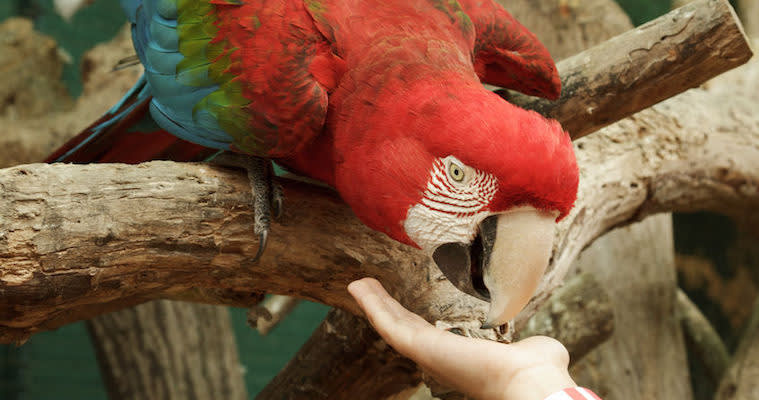
How to Feed the Office Parrot
“Sort of like a walk in the wilderness, just not as refreshing.” That was just one of the hundreds of comments on my recent post about rude “animal” bosses. But I thought it perfectly captured the essence of a wild workplace. Many folks recounted their own experiences with beastly bosses. One reader made an especially salient point — that these animals can only thrive when the proper conditions exist.
“It’s one thing recognising that many managers exhibit these behaviours, but the real issue here is why they are not addressed by their seniors. A failure to challenge and develop individual’s poor traits sets a bad example for all, and there is a high cost in terms of inefficiency and negative organisational culture. Consequently the negative behaviours evolve into survival strategies.”
That started me thinking about another creature indigenous to dysfunctional workplaces — the office parrot. You may be all-too-familiar with this bird, who is eager to listen and repeat every snippet that it hears (to the annoyance of the entire team).
You may have even thought (deviously) about hand-feeding it some juicy bits of info to help feather your own nest. That would be so easy. But what would that make you — the office weasel? Not good.
Maybe you are wondering how or why the parrot landed in the first place? Well, irritating as it is, the office parrot probably did not start out that way. As that commenter pointed it out, it likely adapted to its dysfunctional habitat as a survival tactic.
You may not have thought of your office environment of something you need to adapt to in order to survive. But there are certain conditions that are conducive to creatures like the office parrot. And although you might balk at the suggestion, you might even be contributing to the professional menagerie. You might even find yourself talking back or enjoying the odd bit of birdwatching.
Do not be tempted to feed the office parrot. Instead, if you notice a colorful bird in your midst, take a look around at your surroundings. You may have a bigger problem.
Are the right conditions in place for every imaginable type of wildlife to thrive? A few indicators are:
Lack of focus Do you and the rest of the team spend more time than necessary second-guessing what the next move should be? That might explain why the office parrot is such a nervous bird all the time. Any creature living in a cage is likely to squawk, pluck out its feathers, and even lash out in frustration, as would anyone with no goals or direction. Darkened cage In an atmosphere of secrecy, people struggle to get up to speed or make meaningful contributions. So, all day long the parrot mimics those around who seem to be “in the know.” If organizational leaders are often huddled in closed-door discussions, the parrot may repeat every word it recognizes to make sense of an obscure, confusing environment. Little stimulation Privately, you think that the parrot is a birdbrain without much to offer the team. But perhaps that creature might have been bright, lively, and eager to learn… in its natural habitat. Put that same bird in a dull environment that offers few challenges or weak leadership, and no wonder it starts screeching to break up the boredom.
Heck, any creature spending enough time in a constrictive environment like this might forget that it ever had wings at all.
It is easy to pigeonhole people as little more than workplace archetypes. But we owe it to ourselves and our teammates to be open to another view. Because no matter what circumstances we find ourselves in, we can all work hard to bring out the best of our human — not animal — nature.
Have you worked with an office parrot?




